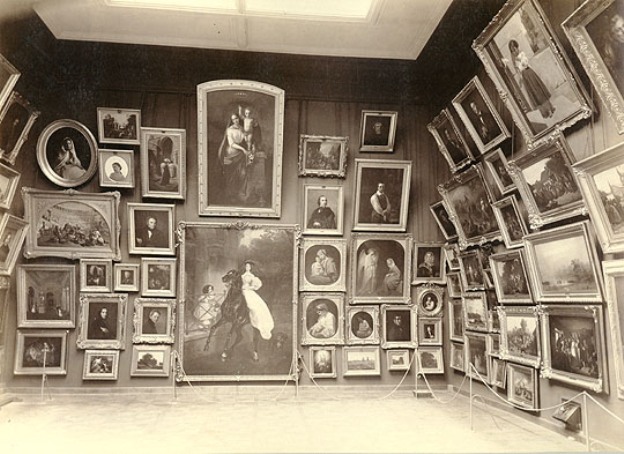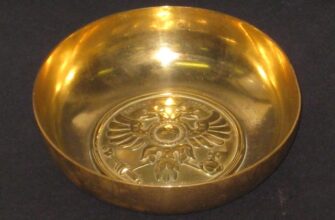The State Tretyakov Gallery is the main Russian Museum, the brainchild of third guild merchants Tretyakov, Pavel Mikhailovich and Sergei Mikhailovich. Date of establishment of the Museum – 1856 is the time of acquisition by P. Tretyakov first works of Russian artists. “I would like to leave the national gallery consisting of paintings by Russian artists,” wrote the famous philanthropist.
At the time of transfer of the collection to Moscow in 1892, it was called “the Moscow city art gallery Pavel and Sergei Tretyakov”. The collection of Western European painting of the deceased Sergei Tretyakov, a former Moscow city head, was donated together with the Russian one, but eventually it went to the State Hermitage and the Pushkin Fine Art Museum then.
Interest in painting was awakened in the young merchant’s son Pavel Tretyakov (1832-1898) from reading illustrated editions: he “was particularly fond of picture books, collected popular prints… And when he grew up, he began to collect prints, drawings, watercolors, kept in the cupboards and tables in his room, saving them from burnout” – as evidenced by N. Mudrogel, an employee of the Tretyakov gallery. Later, a young collector begin to educate himself in art and collecting paintings.
Pavel, who throughout his life was collecting the works of Russian art, had anickname “Archimandrite” circle of friends for similarity of appearance with the spiritual ranks and silence. He was unusually quiet and religious, but solid and enterprising man. Tretyakov acquired the right to see the new works of Russian artists first, and artists were waiting for his visit and his famous phrase, uttered in a low voice: “I Ask You to consider the picture for me.” Despite the fact that P. Tretyakov never bought the painting without haggling, these acquisitions provided considerable help to artists and Russian art in General. “Without his help, – wrote A. Benois – Russian painting would have never got on a open and free way. He was the first and almost the only who supported everything that was new, fresh and sensible in Russian art”.
At the time of the transfer gallery to the city it included 1’287 paintings, 518 drawings and 9 sculptures. Today at the Tretyakov gallery have more than 100’000 pictures. Tretyakov acquired the painting from the XVIII century to his contemporaries, and has also expanded its collection of ancient Russian art. He linked the future of Russian art with the Wanderers, but little attention was paid to Aivazovsky and cautiously were seen trends of 1890s. Today’s collection of paintings in the Tretyakov gallery does not correspond to the personal tastes of the Tretyakov, it has become a national repository of Russian art from Ancient Russia to the most modern trends. And contemporain hanging of pictures by modern historical-chronological principle was aquired due to I. Grabar, the Trustee of the Tretyakov gallery in 1913-1918.
The location for the Museum was chosen on own territory, acquired by Tretyakov gallery in 1851. According to the research of S. Romaniuk, “all the even-numbered side of the 1-St Golutvinsky pereulok (where lived the Tretyakovs – approx. ed.) – from the house to the banks of the Moscow river- was occupied by buildings owned by Tretyakovs. Vast areas were warehouses of the forest, fuse spring, and the corner of the lane and the embankment throughout the nineteenth century the baths of merchants Tretyakov were situated”.
Today, in addition to the world famous building in Lavrushinsky lane, the Tretyakov gallery has the corps of engineers, area on the Crimean shaft, 10, and a number of museums: attached to Tretyakov gallery home Church of St. Nicholas in Tolmachi, museums od V. Vasnetsov and A. Vasnetsov, workshop of A. Golubkina, P. Korin and the administrative buildings.
In the first half of 2016, according to the Ministry of culture of the Russian Federation, the State Tretyakov gallery is the 6th most visited Museum of Russia (it is visited during this period by 970’000 employees). Quality of service according to the Ministry of culture takes 42 place (72.46 points).
In 2017, the gallery will hold a series of important exhibitions dedicated to Soviet and Russian art “the Thaw” about the artists during the reign of N. Khrushchev, “This is my village. Men and women” about XX century sculpture, Eastern sculpture of Golubkina “Zaraysky Sphinx”, as well as large-scale demonstration of works by Z. Serebryakova, V. Chekriguina, D. Zhilinsky, V. Vasnetsov, A. Ivanova, El Lissitzky and others.
Also in the Tretyakov gallery in 2017 will be shown drawings and manuscripts (masterpieces of the Byzantine art of XII–XV centuries) from the museums of Greece. Also for the first time in Russia will take place the premiere of the Italian avant-garde artist Giorgio de Chirico.
Sources:
Tretyakov Gallery, The story of the creation of the Tretyakov gallery. Guide. – M., Vanguard, 1997.
Fedorets A. Tretyakov. http://modernlib.ru/books/anna_fedorec/tretyakov/





